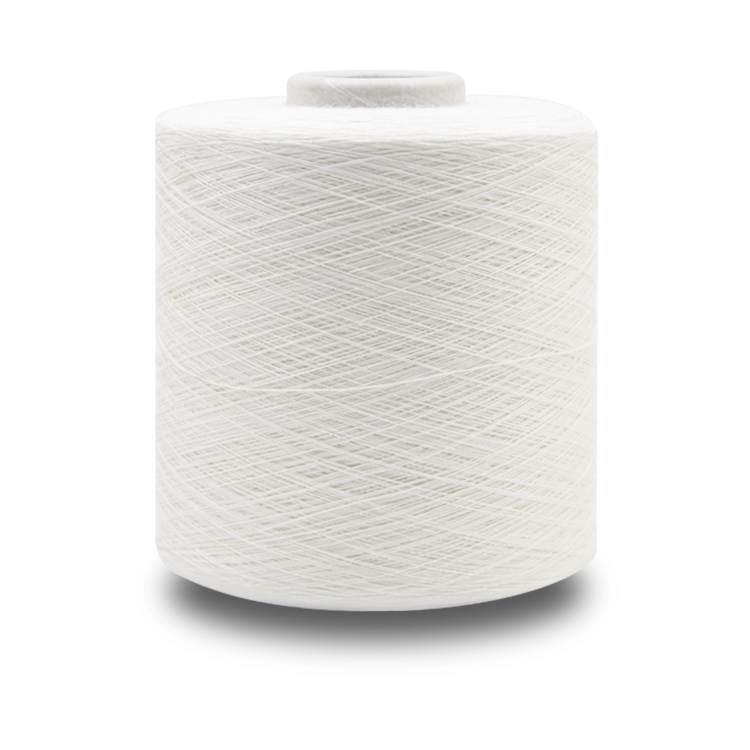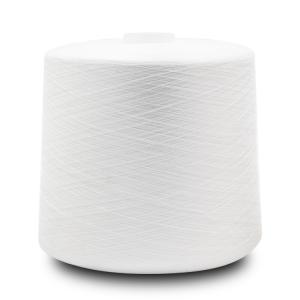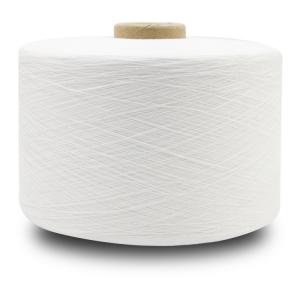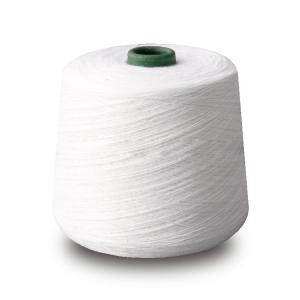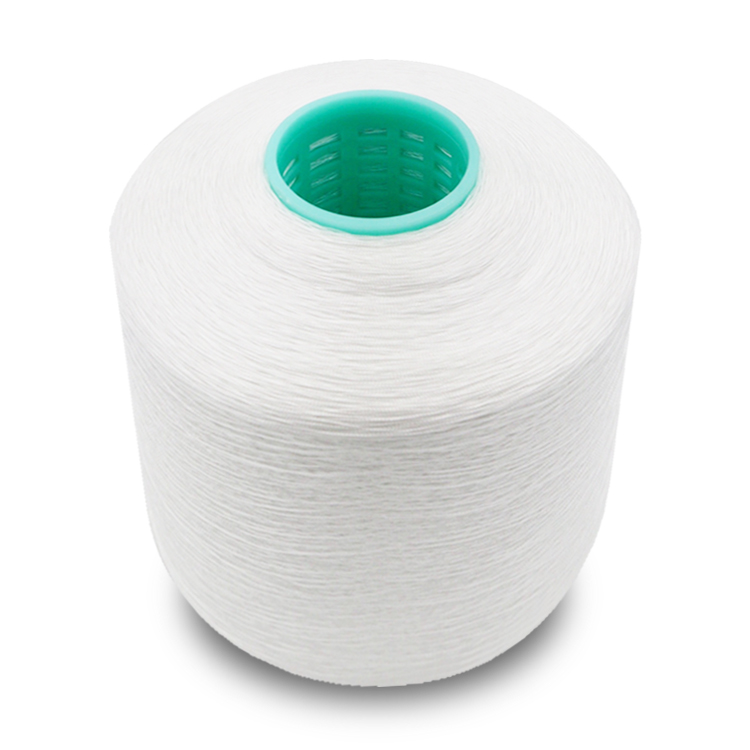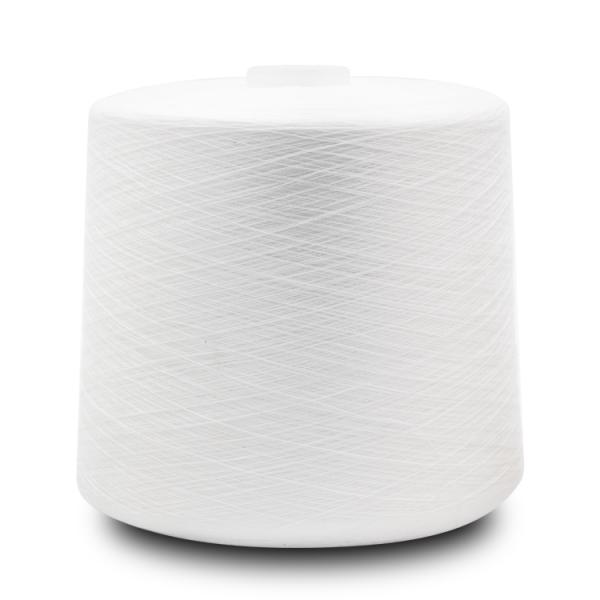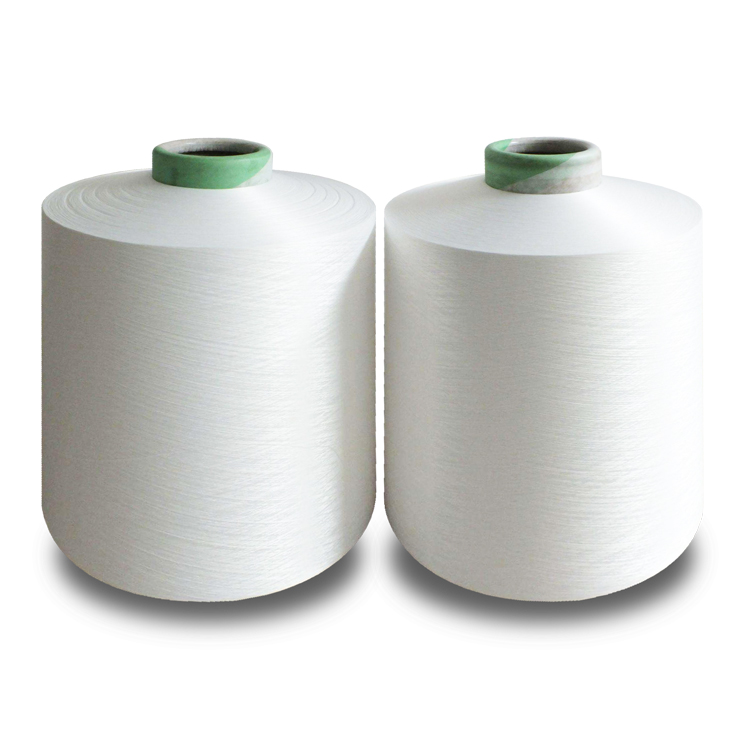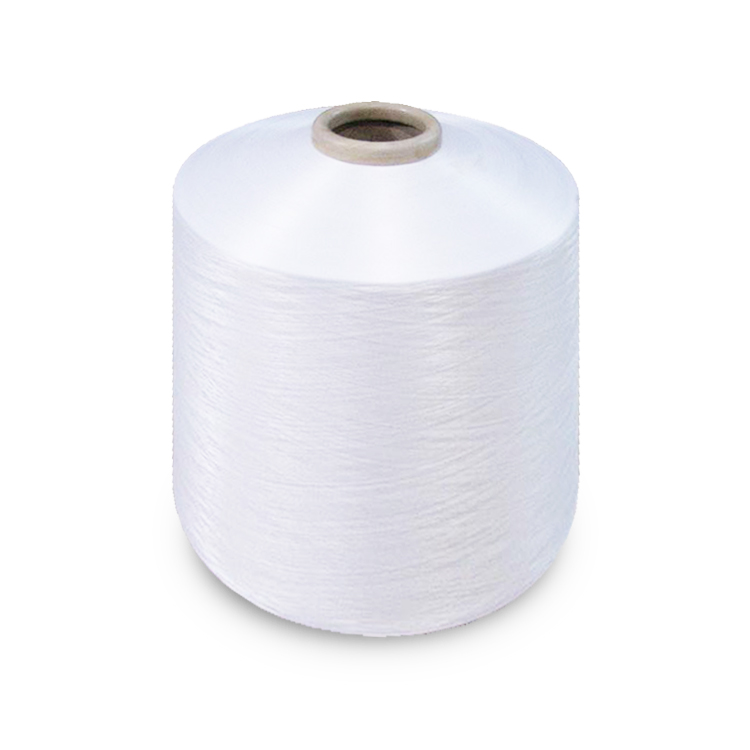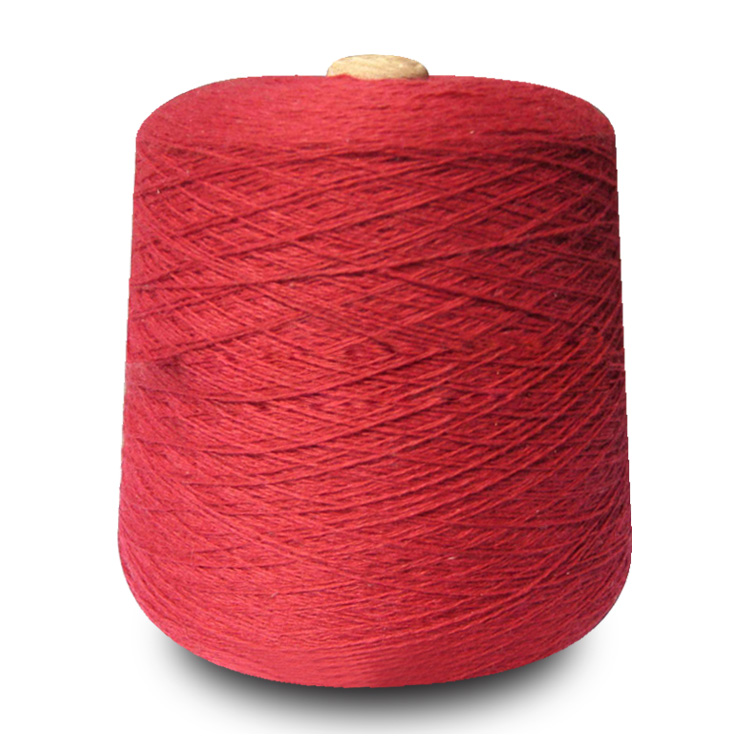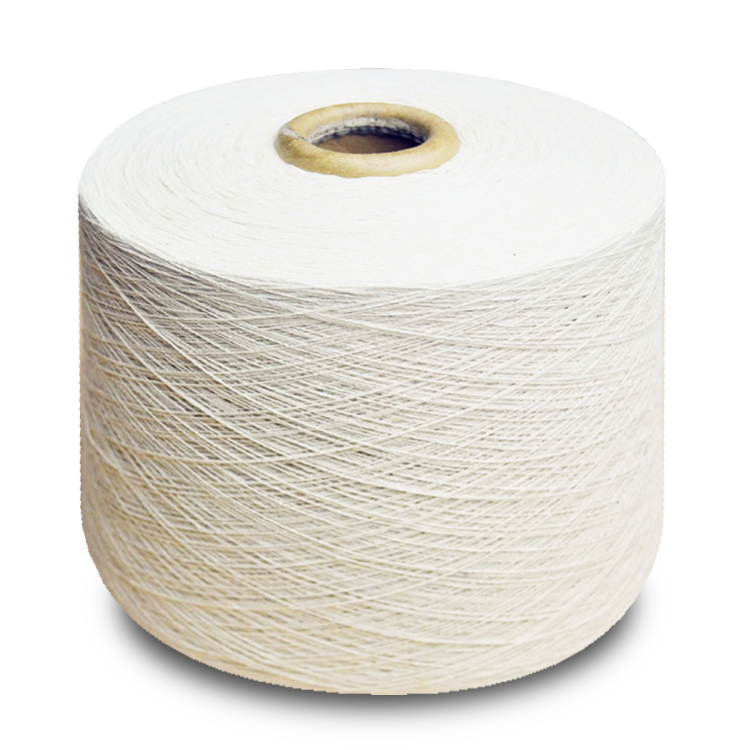Share to:
Related Products
20s, 30s, 40s Ring Spun Combed Cotton Yarn for Weaving
LQ-0213
Price: From $0.66
Delivery time: 9-20 days after payment
MOQ: 500 KG
Roving yarn: cotton yarns of 17 "tex" and below are roving yarns. Mainly used for weaving thick or velvet, looping cotton fabrics, such as coarse cloth, flannel, strong cloth, etc.
The so-called spinning spun yarn is to take animal or plant fibers and twist them into a continuous and infinite extension of spun yarn, so as to apply to the weaving of a behavior.

The twist of the spun yarn itself makes the fibers naturally and tightly clutch together, which is very advantageous for weaving or knitting. The twist of the spun yarn is related to the spun yarn diameter.
The measurement method is determined by the number of turns in each inch of spun yarn and is expressed in terms of low, medium or high. Usually, the higher the twist, the more the spun yarn turns, the better the spun yarn strength. Low-twist yarns are often used to make smooth, glossy or soft matte fabrics; conversely, creased or rough fabrics require high-twist spun yarns.
In order to obtain spun yarns with different quality standards, different spinning methods and systems should be adopted for different fiber materials.
(a) Carding system
It is generally used to spin coarse and medium spun yarns for weaving ordinary fabrics.
(b) Combing system
Combing system is used to spin high-grade cotton spun yarn, special spun yarn or cotton and chemical fiber blended spun yarn.
(c) Waste spinning system
Waste spinning systems are used to process low-cost coarse cotton spun yarns.
(d) Chemical fibre and cotton blending system
When blending polyester (or other chemical fibers) with cotton, because the properties and impurities of polyester and cotton fibers are different, they can not be mixed and processed in the blowing and carding process. They need to be made into strips separately and then mixed on the head drawing machine (mixing). In order to ensure blending, three-way drawing is needed.

Spinning process
When spinning cotton into spun yarn, it usually goes through such main processes as flower cleaning, carding, drawing, roving and spinning. Yarns and spun yarns for high-end products also need to be combed.
To produce cotton spun yarn with different requirements, different processing procedures should be adopted, such as spinning pure cotton spun yarn and polyester-cotton blended spun yarn. Due to the different raw materials used, the physical properties of various raw materials are different, and the product quality requirements are different, different production processes should be adopted in the process.
Spinning - The whole process of processing textile fibers into spun yarns. "Spinning" means to make fibers into strips and to draw and twist them into spun yarns. Spinning is divided into cotton spinning, linen spinning, silk spinning and wool spinning according to natural fibers. The process and equipment are different. Cotton, linen, silk and wool spinning processes are mostly used in pure and blended chemical fibers. There are also some special processes and equipment. Spun yarn is a product of spinning, some can be directly used for weaving; some need to be processed after spinning according to different uses, such as winding, spun yarn drawing, spun yarn winding, twisting, etc; others are directly manufactured products, such as wool, linen, various kinds of sewing spun yarn, etc.
In ancient times, people used to spin by hand. It was not until the 1930s that spinning technology gradually developed into machine spinning. The process of late manual spinning and machine spinning is basically divided into two stages: the first stage, from the release of fiber raw materials to the production of fiber strips, referred to as stripping or stripping. In the second stage, the fibers are further drawn and assembled into spinning, referred to as spun yarn or spinning.
Strips are prepared before processing, such as opening and disassembling fibre packages, testing and material selection. Some raw materials also need physical and chemical treatment to meet the processing needs, such as silk spinning, degumming of linen spinning, wool washing and carbonization of wool spinning, etc. Then, after loosening, mixing, deburring, carding or carding, the raw material of the fibre is loosened into a single fibre state and made into a fibre strip. Some fibers need to be combed to remove some short fibers and defects. Chemical filament can be cut or broken directly into strips, called chemical fiber spinning directly into strips.
Spun yarns are processed in different ways according to fiber properties and product requirements. Usually several fibers are combined, drawn, or combed by needle row at the same time of drawing, so that the fibers in the fibers are further stretched parallel, then gradually drawn, first spun into roving, then spun into spinning. It is also possible to spin the sliver directly into a spinning spun yarn, or to divide the web formed by carding into narrow slivers, which can be directly spun into a spinning yarn after rubbing.
The method of spun yarn formation by drawing, twisting and stitching the fibers is called adding and stitching method.
Historically, spinning specialties, spinning wheels, modern spinning machines and free-end spinning were all spun by adding spun yarns. In addition, in ancient China, there was a method called "performance" in manual spinning, that is, to split the flax skin into strands, and then to tie the ends of a single strand into spun yarns. The famous summer cloth is made of spun yarn produced in this way. In modern times, there are also spun yarn-forming methods that use adhesives to bind fibers.
1. De-impurity of spun yarn
Spinning is a science that studies the processing of textile staple fibers into spun yarns. Spun yarns are usually made by splicing many staple fibers of different lengths, and by twisting long continuous monofilaments.
In the spinning process, first of all, it is necessary to remove the impurities, that is, to preliminarily process the raw materials, also known as the preparation of spinning raw materials. Different kinds of raw materials, different kinds and properties of impurities, different processing methods and processes.
The primary processing methods of raw materials mainly include physical methods (such as cotton ginning), chemical methods (such as degumming of hemp and refinement of silk) and the combination of physical and chemical methods (such as washing and carbonization of wool).
2. Loosening for spun yarn
In order to process the disorderly and transversely closely connected fibers into the spun yarns in longitudinal order and with certain requirements for smooth spun yarns, it is necessary to change the bulk fibers into a single fibre state, remove the transverse connection existing in the fibre raw materials, and establish a solid longitudinal connection between the head and the tail. The former is called the loosening of fibers, and the latter is called the aggregation of fibers.
Fiber loosening is the complete removal of the transverse connection between fibers and fibers. However, the damage of fibers must be minimized. The aggregation of fibers is to re-establish the orderly longitudinal connection of the loosened fibers. This connection is continuous, and the distribution of fibers in the aggregation should be uniform, with a certain linear density and strength.
Fiber aggregates also need to be twisted. The assembly process is not completed at one time. It can only be completed through several processes such as carding, drafting and twisting.
3. Relaxation for spun yarn
Loosening for spun yarn is the tearing of large fibers into small bundles. Generally speaking, degumming of hemp is also a kind of loosening. With the loosening process, the bonding force between fibers and impurities is weakened, so that impurities can be removed, and at the same time, the blending effect between fibers can be achieved. The loosening effect for spun yarn and impurity removal are not completed at one time, but gradually realized through the rational allocation of tearing, striking and partitioning.
4. Combing for spun yarn
The carding function is that a large number of dense carding needles on the carding machine further loosen the small pieces and bundles of fibers into a single state, thus further improving the loosening of fibers. After carding for spun yarn, the transverse connection between fibers was basically removed, and the effect of impurity removal and mixing was more sufficient. However, a large number of fibers are curved, and there are hooks. There are still some lateral connections between each spun yarn fibre.


